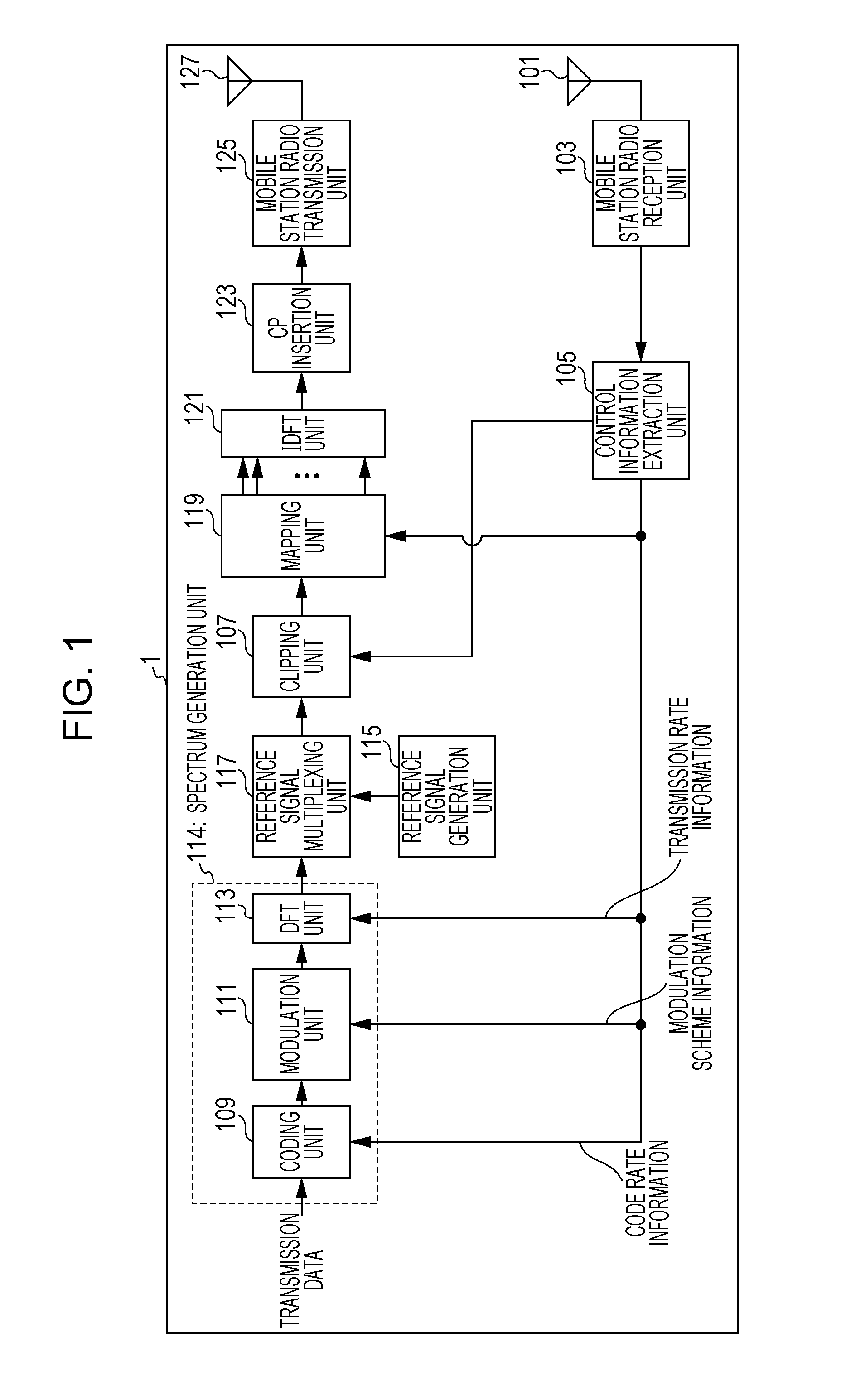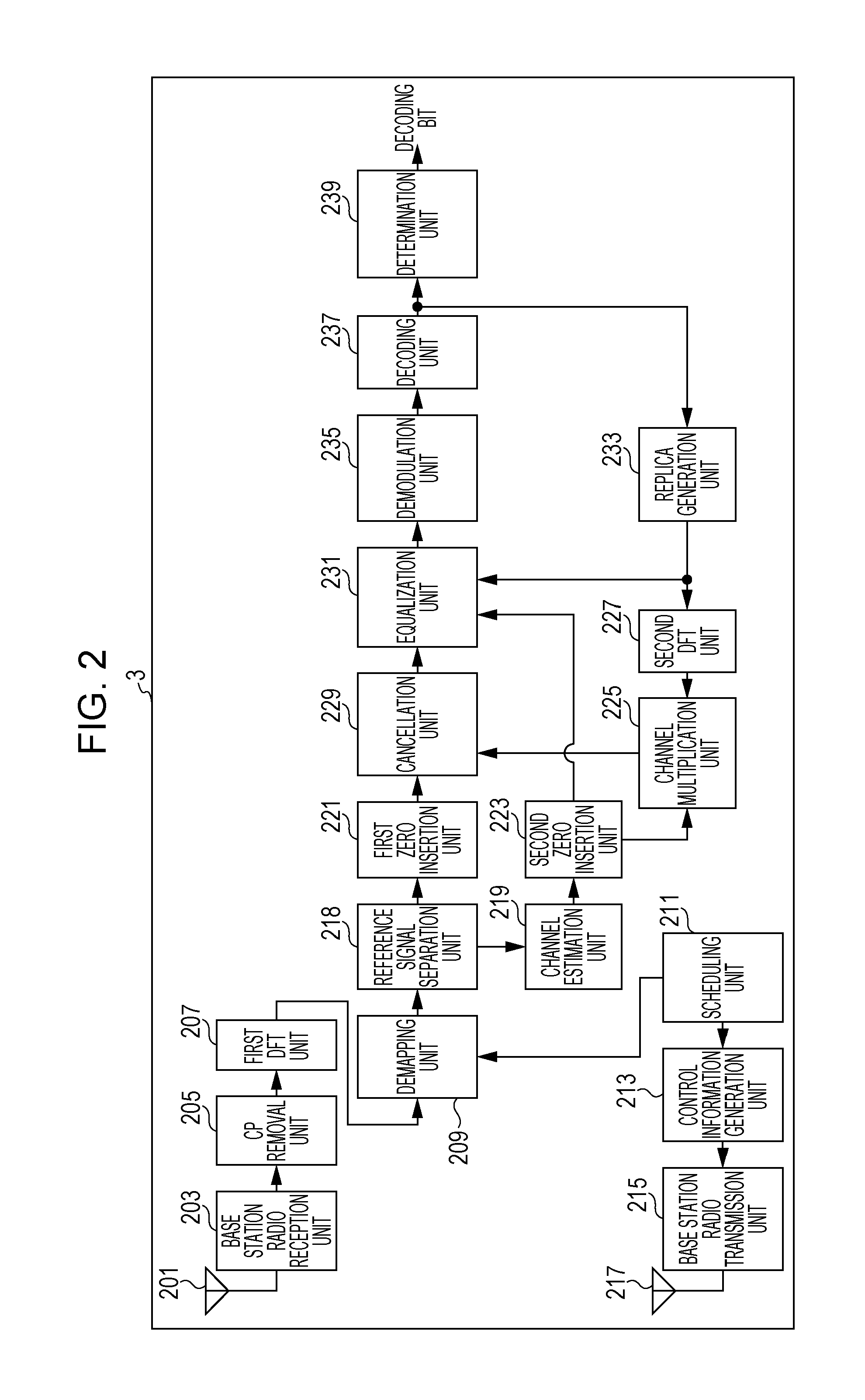Mobile station device, base station device, wireless communication system and transmission method
a mobile station device and wireless communication technology, applied in the field of wireless communication technology, can solve problems such as the problem of taking a lot of time, and achieve the effect of reducing the probability of a plurality of mobile station devices colliding and improving the transmission throughpu
- Summary
- Abstract
- Description
- Claims
- Application Information
AI Technical Summary
Benefits of technology
Problems solved by technology
Method used
Image
Examples
first embodiment
[0061]In the present embodiment, since a portion of a frequency spectrum of a data signal is not used for transmission at a time of using the CB transmission, a bandwidth required for transmission is narrowed. The base station device regards the spectra not being used for transmission as not being received due to a decrease in a radio channel and performs an interference cancellation by the non-linear iterative equalization process, and thus it is possible to suppress the deterioration of transmission performances. Narrowing the allocated band corresponding to one CB grant as described above means an increase in the number of CB grants of different allocated bands that may be used simultaneously for transmission, and it is possible to reduce a collision probability while maintaining a transmission rate. Hereinafter, configuration examples of a mobile station device and a base station device for realizing the present embodiment will be described.
[0062][Configuration of Transmitter]
[0...
second embodiment
[0094]In the present embodiment, since some allocated bands overlap each other between a plurality of CB grants that are prepared by the base station device 3 at a time of performing the CB transmission, the number of generated CB grants increases, and the probability of collision decreases which is caused by a plurality of mobile station devices 1 that perform transmission using the same CB grant.
[0095]FIG. 4 is a block diagram illustrating a configuration example of a base station device 3 according to a second embodiment of the present invention. Since the blocks denoted by the same symbols as those in the base station device 3 in FIG. 2 have the same functions, the description thereof will be omitted, and the functions of the other blocks will be described below.
[0096]The scheduling unit 211 has a function of determining an allocated band used in the CB transmission. Specifically, the scheduling unit 211 determines a plurality of allocated bands for CB transmission, based on inf...
first modification example
[0105]As a modification example of the second embodiment, transmission power in the mobile station device 1 may be set so as to output a difference in transmission power between the spectra from a plurality of mobile station devices 1 which receives signals in the CB transmission. Generally, when a technology of capable of cancelling an inter-user interference, such as turbo equalization and SIC is used, as there is a difference in the likelihood of the decoded bits for each user, an improvement effect resulting from using likelihood information is achieved. Therefore, the effect of easily realizing the separation of signals between users by interference cancellation is achieved by setting reception powers to be different between the mobile station devices 1. For example, Expression (1) may be used for determining transmission power in the mobile station device 1.
[Math 1]
P=10 log10(W)+pR0+α·PL+ΔTF+F (1)
[0106]Here, pR0 is a target reception power level of frequency allocation notifi...
PUM
 Login to View More
Login to View More Abstract
Description
Claims
Application Information
 Login to View More
Login to View More - R&D
- Intellectual Property
- Life Sciences
- Materials
- Tech Scout
- Unparalleled Data Quality
- Higher Quality Content
- 60% Fewer Hallucinations
Browse by: Latest US Patents, China's latest patents, Technical Efficacy Thesaurus, Application Domain, Technology Topic, Popular Technical Reports.
© 2025 PatSnap. All rights reserved.Legal|Privacy policy|Modern Slavery Act Transparency Statement|Sitemap|About US| Contact US: help@patsnap.com



